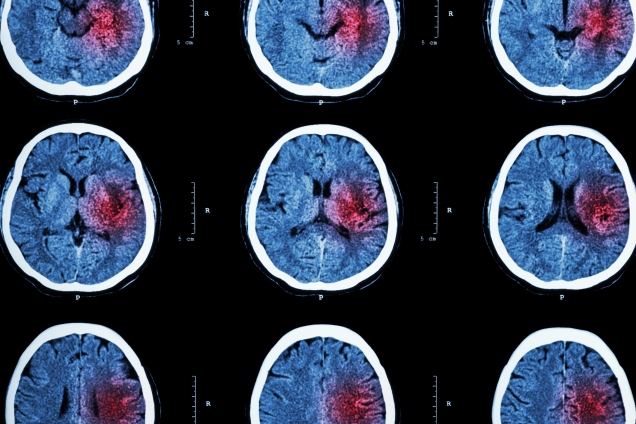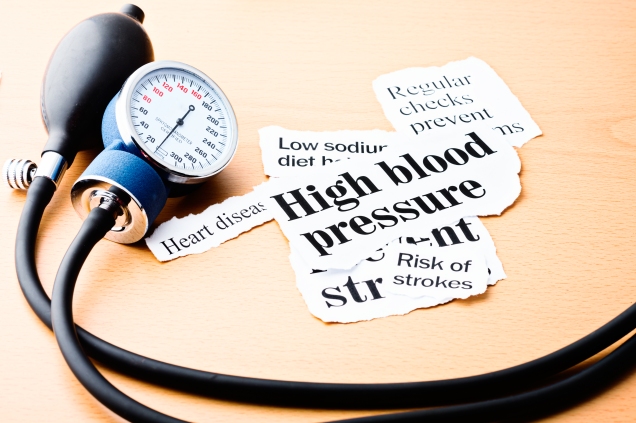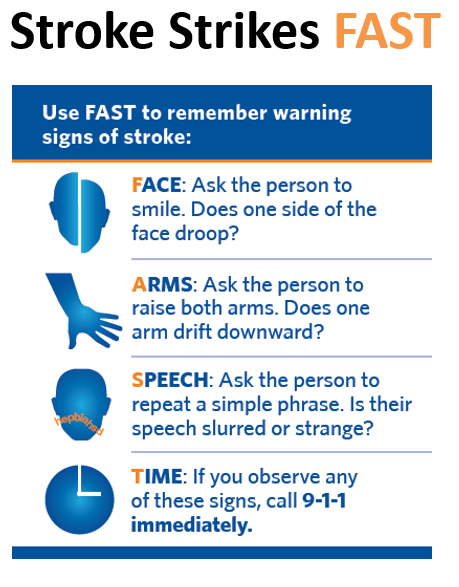Stroke Strikes Fast: Knowing the Signs and How to Prevent
- Category: Stroke, Living Well
- Posted On:
By Toni Rougeou, RN, University Medical Center Stroke Program Coordinator
A stroke is a “brain attack” that happens when blood flow to your brain is stopped. It’s a medical emergency in which knowing the signs and symptoms is vitally important.
May is Stroke Awareness Month, an opportunity to spread awareness of stroke and a good time for everyone to identify their personal risk and learn the steps they can take to reduce the risk of stroke.
There are two types of strokes:
Ischemic stroke – caused by clot or plaque accounts for about 87% of all strokes
Hemorrhagic stroke – Bleeding in or around the brain caused by uncontrolled elevated blood pressure, ruptured aneurysm, or Arterial-venous malformation.
Every minute you are having a stroke, you lose about 2 million brain cells. The longer you take to seek medical attention, the more brain cells are lost. “Time is Brain.”

Stroke is the 5th leading cause of death in the United States and the leading cause of disability in adults.
Each year nearly 800,000 people have a stroke (every 40 seconds stroke happens), and almost 130,000 people die from stroke per year.
Stroke kills twice as many American women as breast cancer each year. More women than men die from stroke and risk is higher. Women suffer greater disability after stroke than men.

African-Americans have double the incidence of stroke than that of Caucasians and suffer more extensive physical deficits. African Americans are also twice as likely to die from a stroke. Mexican–Americans are at higher risk for all types of stroke and TIA at younger ages than Caucasians.
In 2012 the total stroke-related cost in the US was estimated to be $105 billion and is projected to hit $240 billion by 2030.
Who is at Risk for a Stroke?
Anyone can have a stroke at any age. But your chance of having a stroke increases if you have certain risk factors. Some risk factors for stroke can be changed or managed, while others can’t.

What are the risk factors for stroke that can be modified?
- High Blood Pressure
- Diabetes
- Elevated Cholesterol
- Atrial Fibrillation – a type of irregular heartbeat; Makes a person 5X’s more prone to having a stroke.
- Obesity
- Smoking
- Alcohol – more than two drinks a day
- Illegal drug use – Cocaine, Mojo
- Diets high in fat and salt
- Lack of exercise routine
- Sleep apnea
What are some risk factors that we cannot change?
- Being African-American
- Being a Female
- Being over age 55
- Having a previous TIA or stroke
- Having a family history of stroke
What impact does stroke have?
- In 2012 the total stroke-related cost in the US was estimated to be $105 billion and is projected to hit $240 billion by 2030.

- Sudden numbness or weakness of the face, arm or leg on one side of the body (Right or Left)
- Sudden trouble speaking, understanding or confusion.
- Sudden trouble seeing out of one or both eyes.
- Sudden trouble walking, dizziness or loss of balance. Falling to one side.
- Sudden severe headache with no known cause “Worst headache of my life.”

STROKE IS NO JOKE! RECOGNIZE! RESPOND! AND PREVENT!

Toni Rougeou, RN, is the Stroke Program Coordinator for University Medical Center New Orleans. University Medical Center is an Advanced Primary Stroke Center with a full stroke team on call 24/7 to immediately care for patients with stroke symptoms. To learn more, visit umcno.org/strokecenter.


